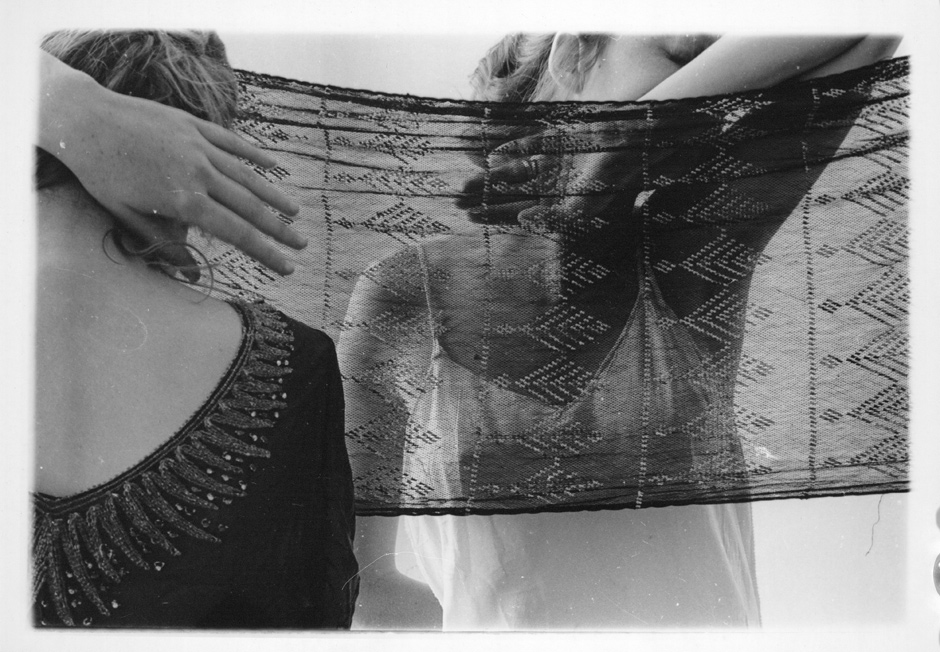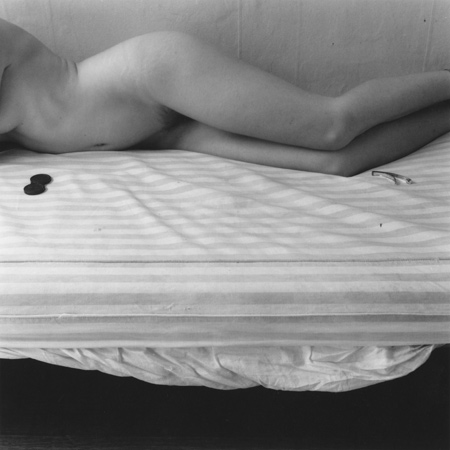A new retrospective of the photographer’s work opens today at Victoria Miro Mayfair, exploring her use of constant, angular lines to direct form and probe commonality. Elliot Watson discusses

Untitled, New York, 1979-80 (N.313). Courtesy George and Betty woodman, and Victoria Miro, London
© The Estate of Francesca Woodman
The collection of Francesca Woodman’s photographs currently on display at Mayfair’s Victoria Miro gallery betray the routinely hidden and boldly contrasting emotions experienced on the unmarked path through early adulthood. Rarely has that journey been documented with such candour, nor that vulnerability accompanied by such composure as Woodman, exploring her place in time as an artist, as well as a young woman.
Woodman stands naked and wide-eyed in an empty museum, her body concealed by the large and gothic skull of a giant beast; she cowers from the camera in the corner of an empty room; she imitates Cleopatra felled by the asp. The viewer is apt to psychoanalyse, to speculate on the artist’s insecurities, to attribute Woodman an intelligent, precocious interpretation of her own femininity. There is no doubt that Woodman was aware of the feminist discourse that laced her decade, the 1970s. There is no doubt she wanted to explore her sexuality, to seduce and to tease. Throughout there is a suggestion of that human oscillation between daring bravado and the debilitating sense of one’s true defencelessness.

Untitled, New York, 1979-80 (N.392.1) Courtesy George and Betty woodman, and Victoria Miro, London
© The Estate of Francesca Woodman
Growing up with artists for parents in Denver, Colorado, Woodman was exposed to modernism, to the bold grids of Mondrian and to Jasper Johns’ flags – a world of strict perpendiculars and rigid right angles. Deconstructing and re-arranging those boxes and rectangles, one encounters the more fluid form of a zigzag – the shape of waves, of changes in tempo and mood, of arms akimbo. Zigzags are not complete, closed shapes. Rather, they are to be continued, to be connected to other zigzags, forming a continuous, rhythmic channel. Whilst all of the images on display feature these shapes either centrally or concealed in the midst of more visceral themes, the second gallery at the Victoria Miro displays Woodman’s experiments with connecting zigzags across photographs. A series of apparently disparate images are arranged in a line so that one zigzag – naturally occurring or created by the artists’ own body – may be met and continued by another in the adjacent image. The effect is to suggest a commonality amongst environments, a connection between the natural and the contrived.
Returning to the first gallery to view the unconnected images, the zigzags become anchors, points from which the artist can deviate and explore herself and her surroundings; there is humour as Woodman’s arms are clad and camouflaged in the bark of pale trees, there is discord as a door leans awkwardly, detached from it’s hinges and surrealism as Woodman’s rushing figure dissolves into the frame. The best images are those where the artist allows the angular lines to take centre stage. In doing so Woodman achieves something that often eludes even the greatest photographers – she allows space for interpretation. The audience are spared the rhetorical commentary of figurative art. The images that achieve this are truly abstract.
Troubled by the perpetual denial of a clear, definitive self-portrait, frustrated by seduction without reward and mesmerised by the omnipresent jagged lines, the viewer is arrested in a beguiling atmosphere; one in which they may hope that, amidst the contorted bodies, the tumult and the uncertainty of youth, there lies a sense of regularity, of profound comfort in the recurring.




